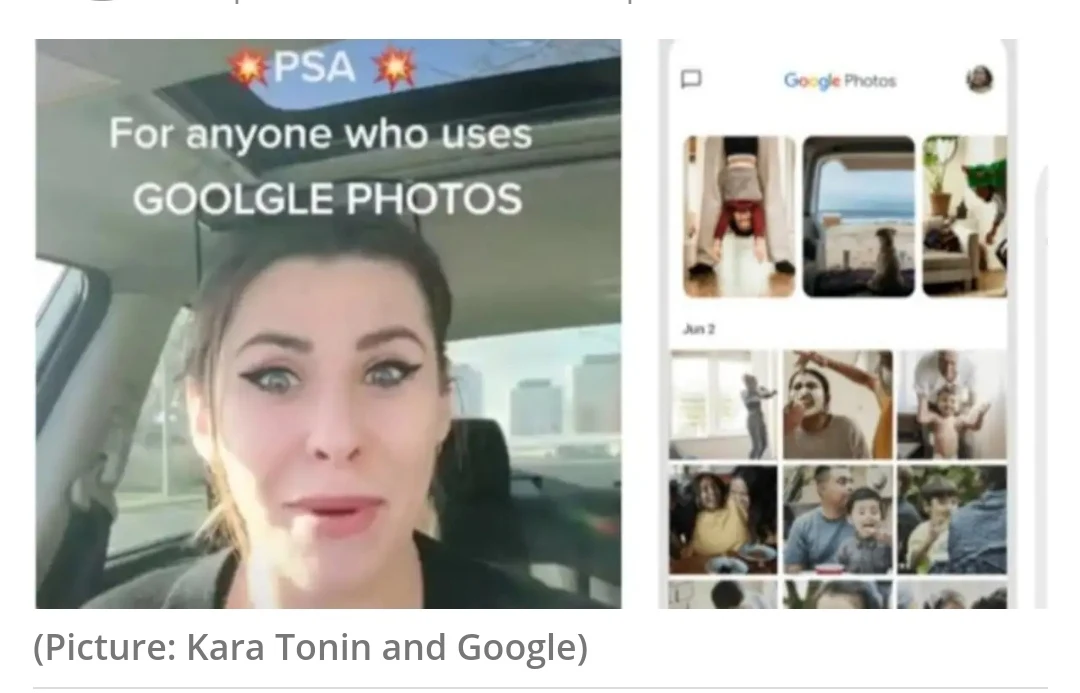As of late, a Canadian lady shared a collection of her child's photos on Google Photos with her mom. In any case, Google Photos wound up adding the lady's R-appraised video to the collection and informing her mom of the equivalent.
A Canadian lady as of late wound up sharing a R-evaluated video with her mom through Google Photos.
The lady had shared a collection of her child's photographs with her mom on Google Photos.
She said that Google Photos facial acknowledgment got an image of her child on the cooler when she was making the video to zest up her relationship.
Have you at any point imparted a collection on Google Photos to your companions or family? Google Photos empowers clients to impart collections to different clients on the stage by choosing the offer choice. Furthermore, every time another photograph is added to that collection, the client with whom the collection is shared likewise gets it. Sharing collections and recordings additionally saves the exertion for a client to independently send photographs and recordings to numerous clients. Google Photos likewise utilizes facial acknowledgment to monitor individuals in photographs. Be that as it may, some of the time comfort includes some significant downfalls and innovation can likewise show its flip side.
As of late, Canadian lady Thinking Boxx website shared a collection of her child's photos on Google Photos with her mom. Notwithstanding, Google Photos wound up adding the lady's R-appraised video to the collection and telling her mom of the equivalent. Thinking Boxx, shared his experience in an entertaining TikTok video saying that she was doing "unspeakable, wicked things" around there.
So for what reason did Google Photos add a R-evaluated video in a collection of innocuous kid photographs? Tonin said that she was making a R-appraised video "to flavor up her relationship" when Google Photos perceived her child's photograph from the cooler behind the scenes and added it to the collection Tonin had imparted to her mom.
"So Google Photos has this inconceivable thing where it perceives individuals' appearances, and on the off chance that you type in their name, it'll pull up each image and video with their face in it. And afterward you can make a collection of that individual and offer it with your loved ones," Tonin clarified in the video she made as a public assistance declaration (PSA) to every individual who uses Google Photos. "Isn't innovation mind boggling? Excessively staggering if you were to ask me," she said.
Tonin further disclosed to her watchers that Google made "a great little collection" of her child which she imparted to her mom, so every time she transferred an image of him, it would tell her mom.
"So a short time back, I chose I needed to zest things up a smidgen in my relationship, and I made an evaluated R video where I was doing unspeakable, corrupt things. Also, Google Photos got a little image of my child behind the scenes on my ice chest and said, - Hey, that is an image of Josh. How about we send this video to Kara's mother," he said. He finished up the video by saying 'sorry' to her mom.
Google photographs allows clients to add names to a face bunch it perceives by giving it a moniker, an element which Tonin had conceivably empowered when the Photos perceived her child's face from a minuscule picture on the refrigerator behind the scenes. "We identify whether any photograph has a face in it. On the off chance that the face gathering highlight is turned on, algorithmic models are utilized to foresee the closeness of various pictures and gauge whether 2 pictures address a similar face," Google Photos notes on its help page.
Picture Source Kara Tonin












0 Comments